Esther Fuertes and Dolors Juárez
What is Connectades. Fem un projecte (Connected. Let’s creat a project)?
Connectades. Fem un projecte is a new forum for experimentation in education, in the search for a sustainable model of collaboration between schools and the Museum. Rethinking the lessons that we learned with the Tàndem schools project with the current IE Arts, we are imagining, with four local schools, an accompanying programme addressed to educational centres that would like to develop a research project through the arts.
In these projects the practices and the processes of artistic creation, as well as the relationships of participation and collaboration that are developed, offer us ways of artistically formalizing and discussing the lessons and the conclusions of research into any subject.
The first period of this two-year pilot programme has taken place during the 2021-2022 academic year.
The initial proposal envisages exploring the museum’s collections each year, based on a topical or socially interesting subject as the transducer. The museum offers a thousand years of art history to connect the present and the past transversally and strategies for activating the critical gaze. One of the main tasks of the team of educators at the museum and in classrooms is to contextualize and re-signify this patrimony in relation to the lives of the pupils, and, based on their interests, to forge forums for creation, thinking and civic action.
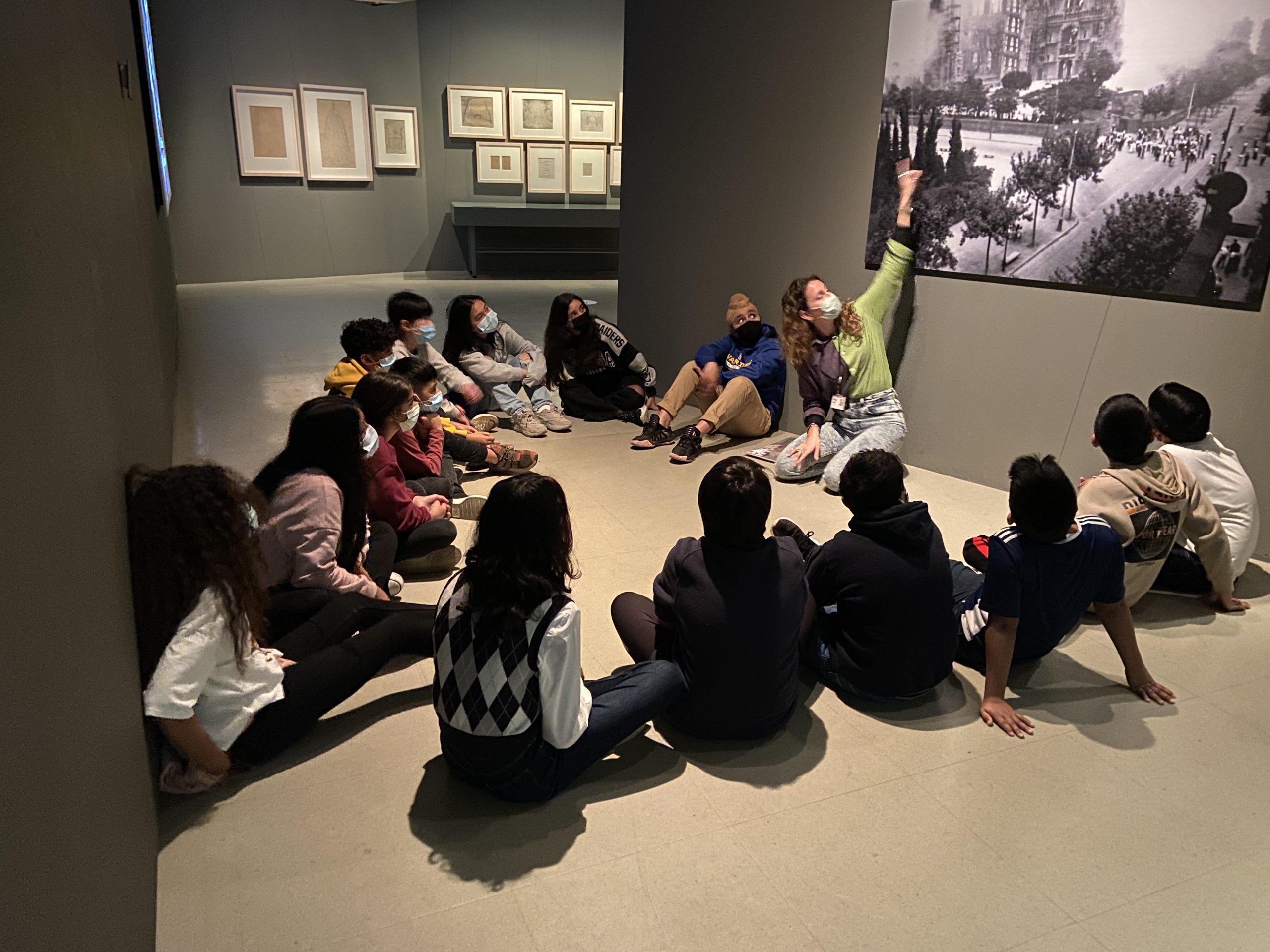
Sixth-year primary school pupils from the Escola Francesc Macià visit the exhibition Gaudí: Fire and Ashes at the MNAC.
What does Connectades propose?
The programme proposes two areas of action. On one hand, training and methodological exploration for teachers. The idea is to generate a bond of familiarity and proximity with the museum as a pedagogical device to stimulate the desire to know and the autonomy of both teachers and their students in the use of its collections in a broad sense. The museum as a place in which to learn and to do research into any subject, but more than anything a place in which to connect, to discuss and to exchange ideas, experiences and knowledge with others.

Training session for teachers taking part in the project, in the MNAC’s collection rooms.
Moreover, and as an applied practice, doing a research project with pupils in which to experience the possibilities provided by the museum, and the research based on the arts and visual and relational methodologies in order to ask questions about the world we live in, and try out ways of working with art as a transformative element in the classroom and in life.
The research done is accompanied by teachers’ tutorials and observation of work in the classroom, placing the emphasis on the process and the people, linking the study and the practice of art in a group.
The research framework sets out to explore in three areas:
- What does the museum tell us (its collections, the temporary exhibitions, the archive) about the subject and the questions we ask?
- What do current artistic practices and cultural agents say?
- How does the local context echo this subject (the current situation, school, neighbourhood, home, etc.)?
What has the thematic scope of the research in the 2021-2022 academic year been?
This year we have pooled out ideas about THE CITY through, among other explorations within and outside the museum, the temporary exhibition Gaudí: Fire and Ashes, which was on from November 2021 to March 2022, a common framework of research for all groups.
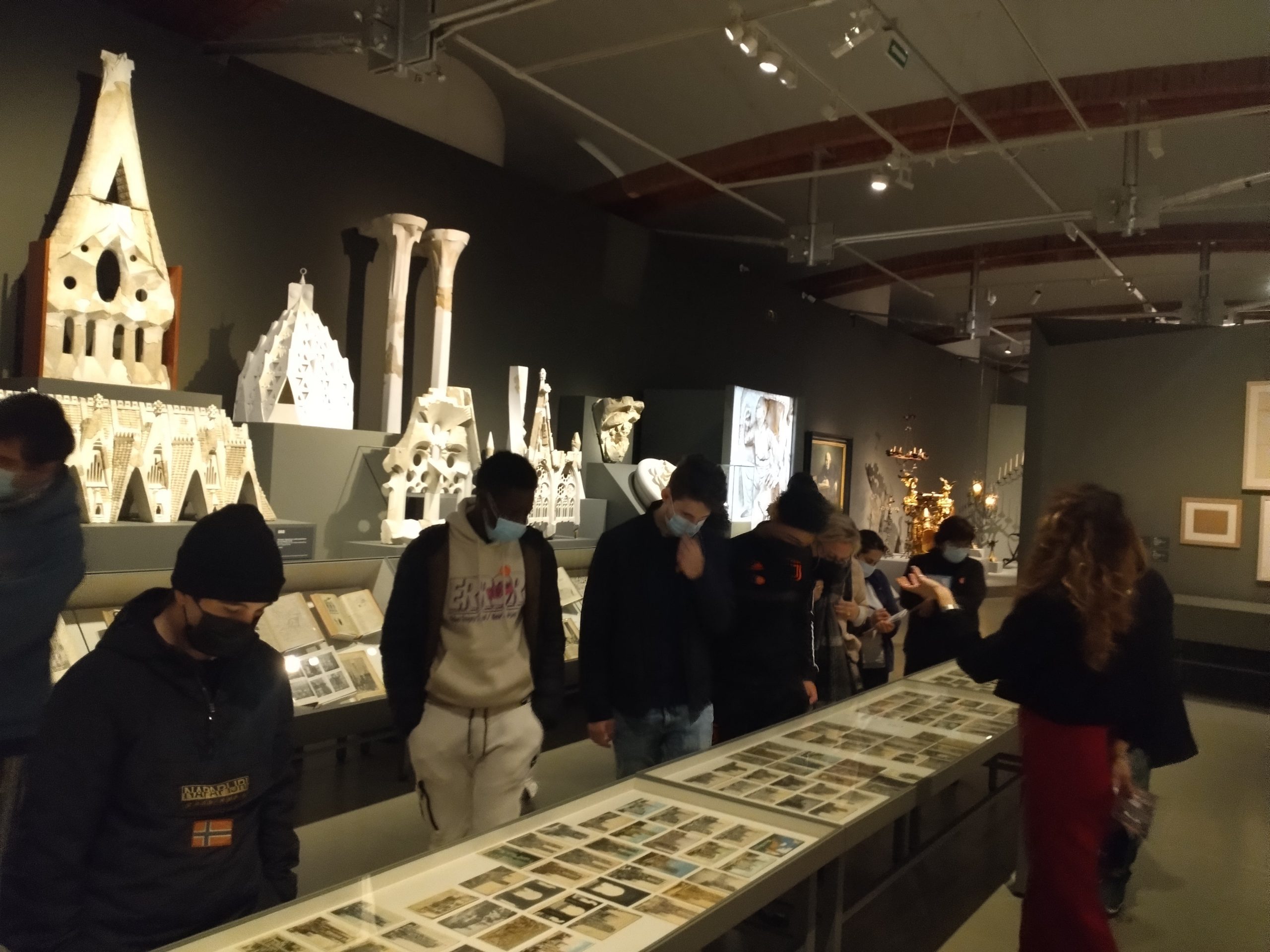
The group of pupils from CFA Pere Calders take part in an activity in the exhibition Gaudí: Fire and Ashes at the MNAC.
Investigating THE CITY has made it possible for the pupils taking part to wonder about different subjects linked to their everyday lives in a framework of holistic learning, from different perspectives and fields of knowledge. The lessons, the artistic practice and the patrimony have shaped many of the gazes and the actions carried out.

Fourth-year primary school pupils from the Escola Gayarre during their research.
About ten projects that reflect on the subject of the city have been developed. The projects offer a kaleidoscopic view of the study subject. The activating questions of each research project were:
Is there graffiti in every neighbourhood of Barcelona?
Can there be art in nature and nature in art?
Is the city polluted?
The city and emotions
Who designs cities?
How are neighbourhoods transformed? The case of Sants
How can we achieve a more sustainable Barcelona?
How can we tell the neighbourhood’s stories through art?
What signs are there of the democratic memory in the city?
How does the city shape our identity?
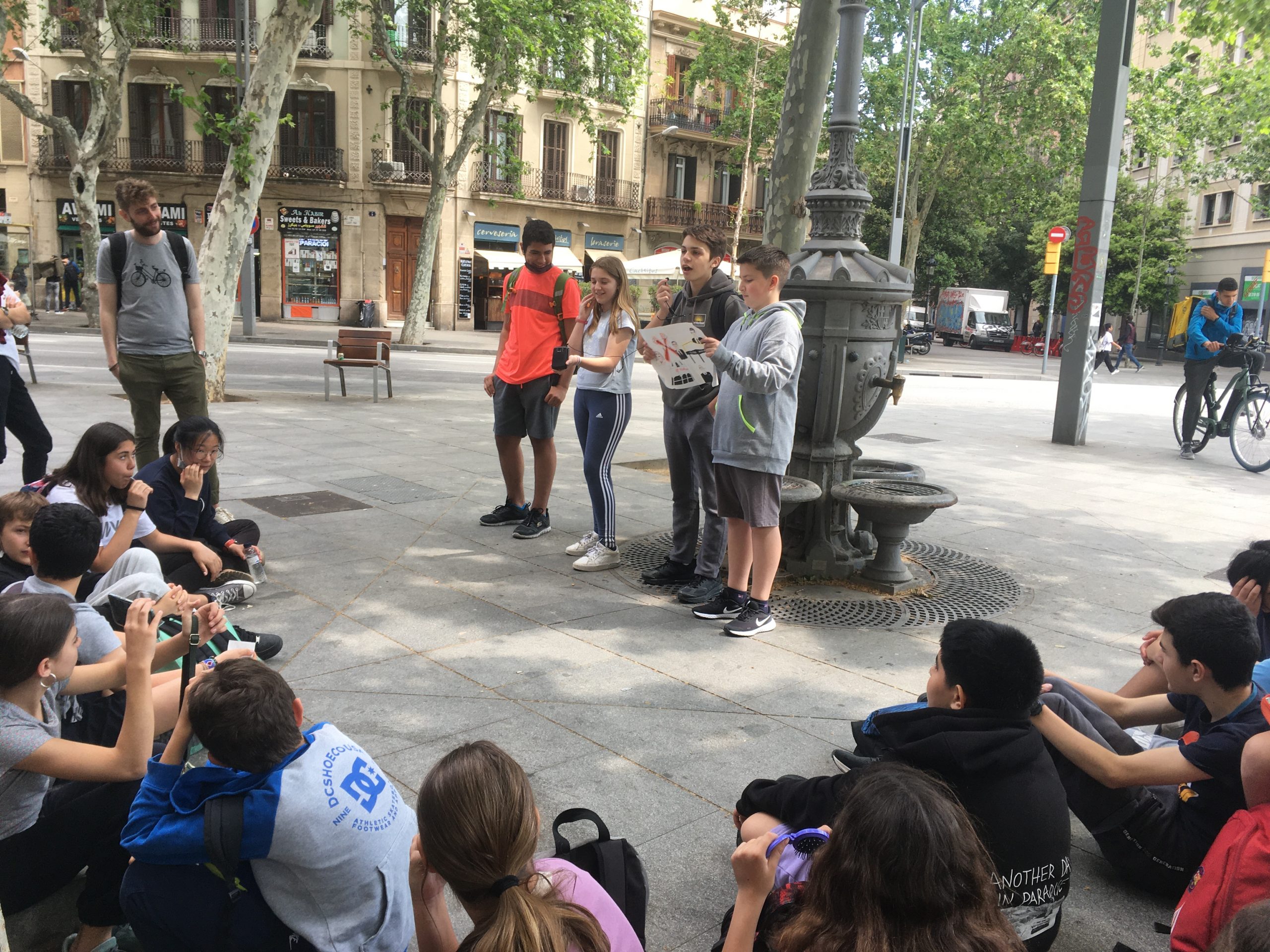
First-year ESO pupils from IE Arts doing a working session in the public space related to their research.
Who does the programme connect?
It has connected many people and different agents. We have worked together with 14 teachers and more than 200 students from a primary school, a secondary school and adult education centres: Escola Gayarre, Escola Francesc Macià, IE ARTS and CFA Pere Calders. They all form a large constellation of names that shows the diverse locations and relationships in which the project has been carried out.
Besides the quantity, we value the plurality, and the importance being connecting with cultural agents, teachers and local education centres, so that together we can build a network of work and research on the subject of the museum’s cultural heritage and contemporary artistic practices.
The people who have signed this post have taken part in the working party that designed and implemented this year’s project, along with Júlia Lull and Mònica Pérez from the museum’s team of educators, and also trainee students Paula Antón and Carla Simón from the UB’s Master’s Degree in Art and Education: A Constructivist Approach, directed by Fernando Hernández.
Correspondències. How to think about the city with the shared experience?
Having reached the final stages of the project, Correspondències is structuredasa transverse initiative for all groups. It is a proposal that aims to highlight the lessons learned by the children and adolescents, inviting them to think about their work process. Working artistically on a series of postcards will enable them to share the experience with the educational centres.
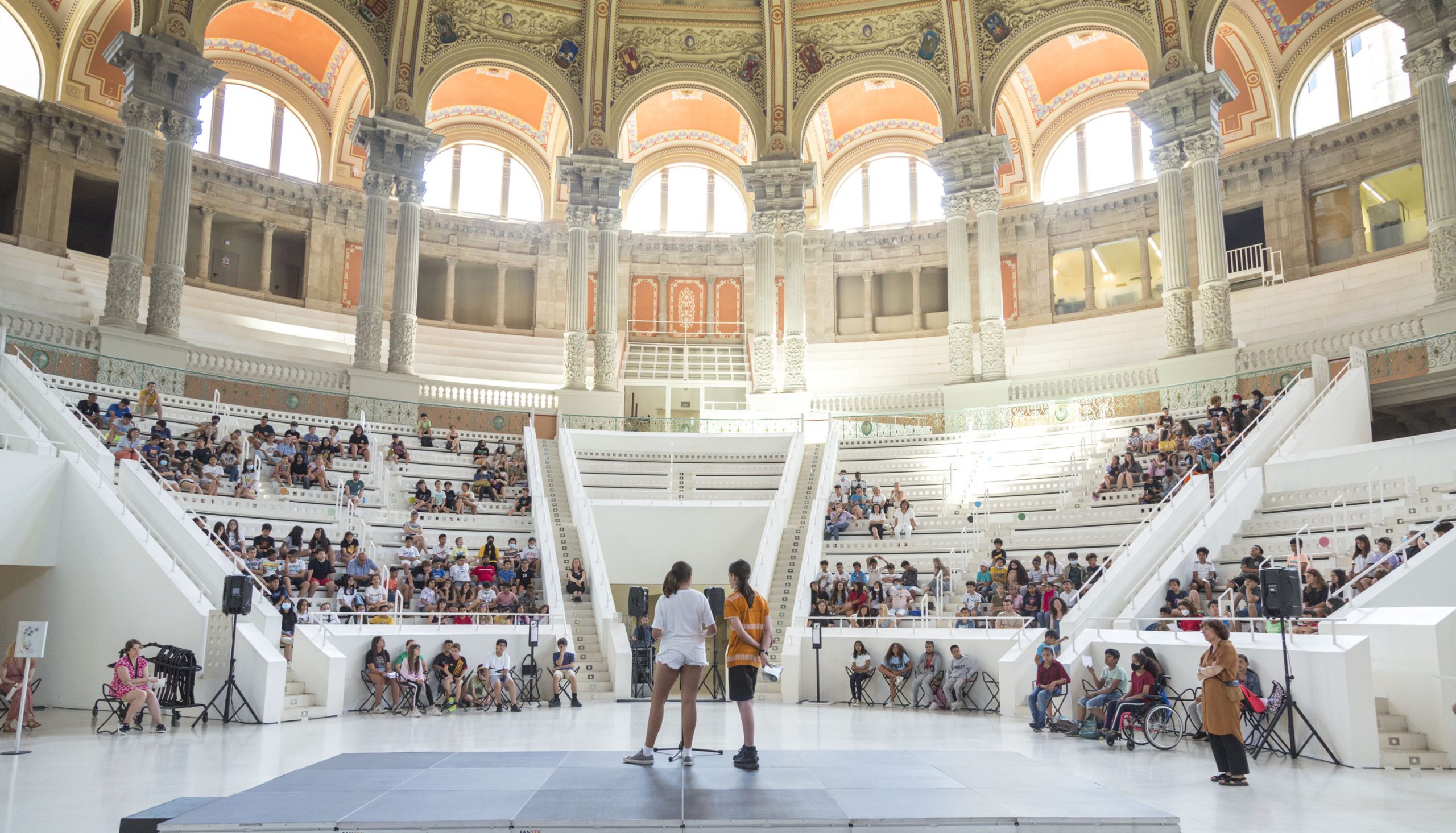
Pupils presenting their research project to other children and young people taking part in Connectades. Fem un projecte at the MNAC. 7 June 2022 Photo: Marta Mérida.
A moment when the pupils taking part met and talked to people from other educational centres who had worked on their postcards. MNAC, 7 June 2022. Photo: Marta Mérida. / An exchange of postcards and knowledge in the framework of Correspondències between different pupils. MNAC, 7 June 2022. Photo: Marta Mérida.
A meeting at the museum of all the participants allows senders and receivers to talk and get to know one another. It is the moment to exchange thoughts and lessons learned.
The postcards are dissolved in a mass of relationships and experiences and transformed into a collective art installation. Personal impressions are forged, activating a sort of large and diverse crossroads, which makes new interpretations and encounters possible.
Correspondències is part of the exhibition Connectades. Fem un projecte, presented at the Museu Nacional d’Art de Catalunya in the summer of 2022, a forum for mediation that is constructed in a collective endeavour. You can visit it until 11 September in room 44 of the museum.
Art installation Correspondències at the MNAC, constructed with the postcards made by pupils from the different schools taking part. Part of the exhibition Connectades.Fem un projecte at the MNAC, summer 2022. Photo: Marta Mérida.
What continuities are planned?
During the next year of experimentation with these educational centres, the project Connectades aims to continue rethinking formative areas through the arts, creating a favourable atmosphere for gatherings and generating spaces for joint conceptualization and creation.
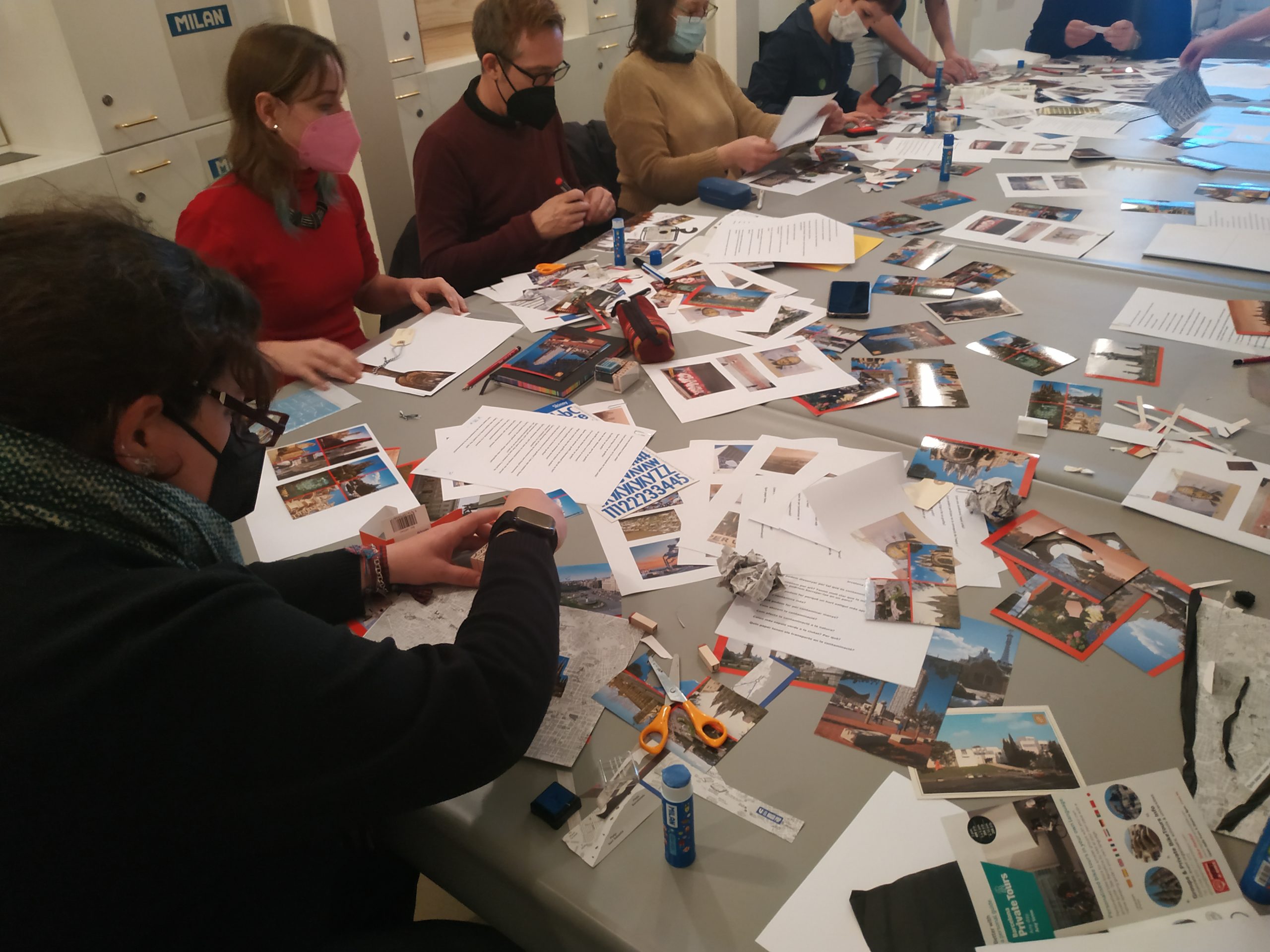
Teachers taking part in the project in one of the training sessions devoted to processes of creation.
Education through the arts allows us to direct practices based on imagination, thought and reflection. Artistic practice becomes part of a process of exploration that makes multiple presentations, readings and interpretations possible. Rather than a way of working, according to techniques and styles, it enables us to learn and to think critically.
In this respect, Connectades. Fem un projecte also wishes to be an area of institutional exploration for putting ways of working into practice inside and outside of the museum, activating questions about the reality that surrounds us, arousing curiosity through art, to discover new possibilities of understanding and imagining our lives. A curiosity that must be looked after and accompanied in order to activate other ways of relating to one another, weaving a web of knowledge together.
#ConnectadesFemunprojecte












